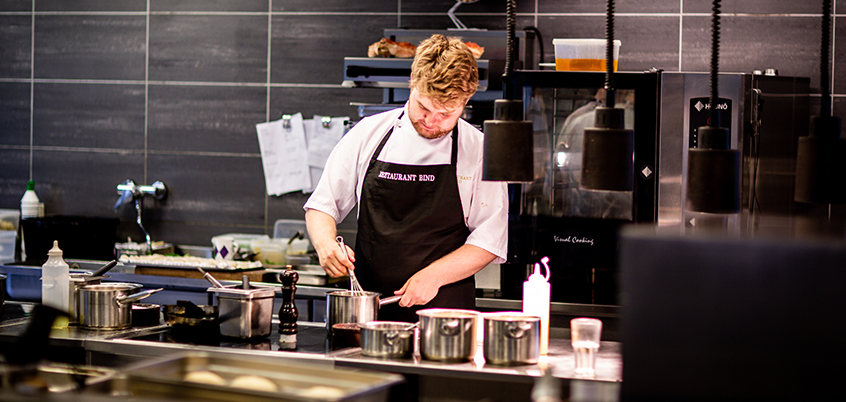Restaurants Poised for a Comeback Turn to Technology

Many of the restaurants that have closed or pivoted to a take-out/delivery-only model may soon reopen to a dining public with elevated safety expectations, posing new challenges to their business. Survival will require innovative tactics and the willingness to utilize technology to manage costs and appeal to a skittish clientele.
With a razor-thin profit margin and a safety-conscious dining audience, restaurant owners forced to close in the wake of COVID-19 due social distancing orders must now find ways to survive as state and local governments start to set reopening guidelines.
The financial costs have devastated an industry that, before the virus hit, was expected to bring in up to $900 billion this year. Now, restaurants are on track to lose about $225 billion over the next couple of months, according to Forbes. A March 2020 report from PYMENTS stated that the number of diners visiting sit-down restaurants declined more than 85% , and then dropped more than 50% in the 11 days between March 6 and March 17.
To survive financially, restaurant owners had to pivot their business models and turn to technology to cater to a dining public that found themselves stuck at home—but still hungry. Walk-in dining traffic and reservations halted immediately, while online ordering and electronic, contactless payment skyrocketed.
“We’ve taken forever to build up trust and loyalty with the customers. Now, here we are thrown into this pandemic, and people are like, we don’t trust anyone anymore, don’t trust the food source, the cooks,” says Robert Irvine, Food Network celebrity chef. Irvine was forced to close two of his three current restaurants in the wake of COVID-19.
As restaurant doors begin to open again, winning public trust back will take a combination of culinary creativity and innovative technologies.
Technology Provides the Pivot Restaurants Need
Being required to shelter in place has changed consumer habits when it comes to eating out. For restaurants to survive in the COVID era, they will need to evolve with them.
Currently, about one-third of consumers say they’re getting more takeout than before the pandemic, according to Restaurant Business Online. Still, they’re anxious to get out—just more than 40% of consumers polled say they plan to go out to eat in a restaurant within 30 days of their government officials announcing a decreased infection rate.
About 45% of consumers say they’re currently eating less fast food than they normally do, and 32% said they plan to make more home-cooked meals after the virus passes. Restaurant owners will get creative to not only attract diners back to their dining rooms, but also find ways to package their food to appeal to customers who would rather cook at home.
With fewer people dining out, restaurant owners are devising new ways to make up for lost revenue. Quick service chain restaurants (QSRs) and local restaurants have begun offering take-home family bundles featuring meals for the entire household. Curbside service lets diners purchase and pick up food without leaving their cars. Many have boosted their own delivery fleets or partnered with third-party delivery operators such as GrubHub or UberEats to allow contactless delivery, with food dropped off at customer homes.
“Contactless is going to be around for a while,” says Clay Johnson, Chief Digital and Technology Officer for Yum! Brands, which includes KFC, Taco Bell, Pizza Hut, and The Habit Burger Grill. “That will help people feel safer because they are not exchanging items with the server or drive-through workers.” Technology can help to reduce physical contact and ease customer safety concerns. Paper or plastic menus are now digital, and restaurants are making it easier to order and pay digitally to reduce the need for contact with a human.
“We actually created a selfie stick that attaches to the credit card machine and can be handed out the window,” Johnson says. “They can use Apple pay or Google Pay or they can swipe the credit cards themselves.”
How Digitalization Enables Dining
Around the country, states are slowly reopening and allowing limited service at restaurants. Going forward, owners will need to adopt new business practices if they plan to survive and succeed:
Forget about cash-only
Restaurants will increasingly transact business using electronic means instead of cash. Paper tips will no longer be left for the server, and in fact, tips may even be included in the cost of the meal. Even exchanging a credit card will be more sensitive in the contactless world. Irvine says more tableside point-of-sale (POS) devices will appear that allow diners to enter payment information or to pay from their phone.
Ensure connectivity to power POS
Restaurants need to ensure their network connectivity is robust enough to handle the increase in online orders and delivery schedules as well as the paperless approach when diners return to their restaurants. These businesses will also rely on technology to power automated tasks via internet-connected devices as part of more sanitary safety guidelines.
Embrace the cloud
Many restaurateurs have already made the move to the cloud for managed network services, because they are in the business of food, not networking technology. “One of the good things in the past couple of years has been a big shift to the cloud; the stores are wired to the internet. This distributed infrastructure gives you access to a lot of bandwidth and reliability,” Johnson says. “The big shift now will be into apps.”
Build trust and transparency
Consumer confidence in eating out will require adherence to the highest safety and cleanliness standards. Internet of Things (IoT) devices will be used to track supply chain items and ensure food temperatures are properly maintained and safety checks done on a regular basis.
Control costs, at all costs
Fewer people coming in the doors and fewer tables in the dining room mean less tolerance for waste. POS technology will be used to schedule and track supply deliveries, make recipes more efficient, and monitor inventory to reduce waste. “It will be monitored from the day it leaves that distribution depot, to the minute it hits the plate,” Irvine says.
Restaurants Will Evolve for Customers
The good news for restaurants is that customers will likely come back to what they know; about 38% of consumers in the Restaurant Business Online report said they will support local businesses more in the future.
What they come back to depends on the ability of the owner to adapt to a clientele more focused on cleanliness and transparency. Technologies to streamline supply chain management, payment processing, and restaurant operations have become more mainstream as industry leaders consider how best to recover in the wake of COVID-19. Restaurant owners will explore these innovative ways to attract and retain cautious diners as they stage a culinary comeback.
Click here for more advice on how businesses can respond to the challenges of COVID-19.
As restaurants prepare to re-open, leveraging technology will be key to building customer trust.
Locked Content
Click on the button below to get access
Unlock NowOr sign in to access all content on Comcast Business Community
Learn how Comcast Business can help
keep you ready for what's next.










